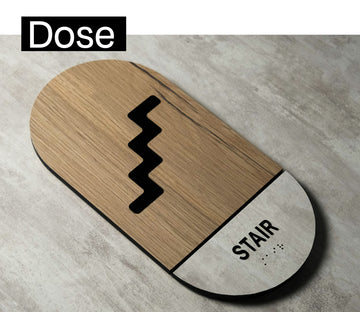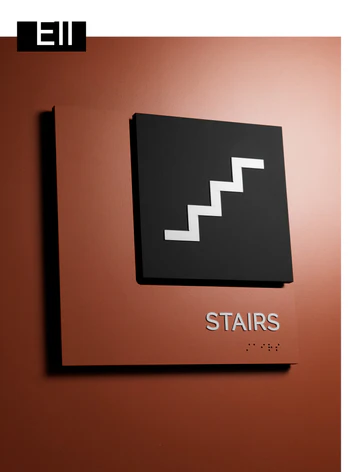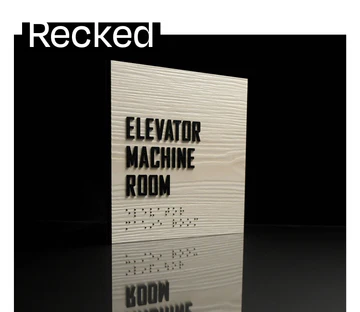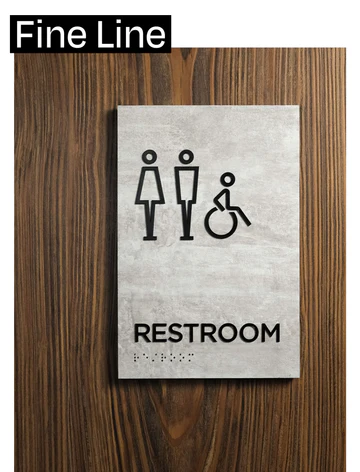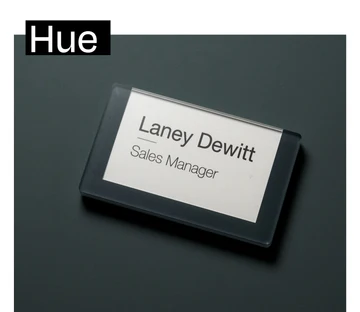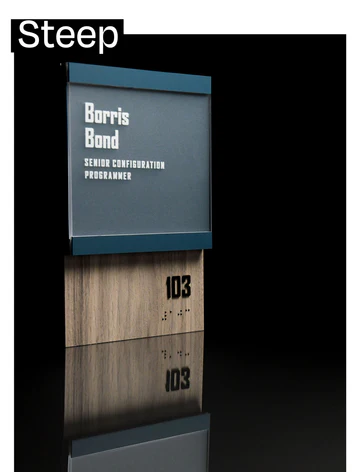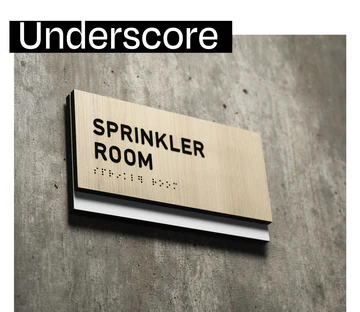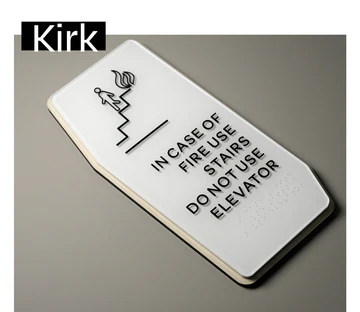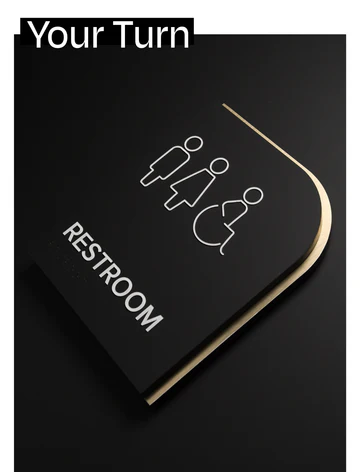Cross Rhodes wayfinding solutions provide a system of visual cues and signage to help people navigate spaces easily and efficiently.
- Graphic Design
- Channel Lettering & Logos
- Plaques & Plates
- Cast & Flat Cut Metal Lettering
- Fabricated Lit & Unlit
- Installation

GRAPHIC DESIGN
Graphic design for signage focuses on creating visually effective signs that communicate messages clearly in physical spaces.
- Outdoor Signage: Designing large-scale signs like billboards, banners, and storefront signs to attract attention and deliver messages to passersby.
- Indoor Signage: Creating signs for interior spaces, such as directional signs, room labels, and informational boards in places like malls, airports, and offices.
- Wayfinding & Directional Design: Developing cohesive, easy-to-follow signage systems to guide people through spaces, such as hospitals, campuses, and transit stations.
- Retail & Event Signage: Producing signs for promotions, sales, and events, including point-of-purchase displays, trade show graphics, and banners.
- Digital Signage: Designing animated or static visuals for digital displays, commonly found in stores, restaurants, and transportation hubs.
Effective signage design ensures readability, brand alignment, and immediate comprehension, combining clear typography, colors, and layout for optimal impact.

CHANNEL LETTERING & LOGOS
Creating signs with plastic lettering and logos involves designing and manufacturing dimensional signage using durable plastic materials. This process includes:
- Design & Planning: Custom designs for lettering and logos, ensuring they align with branding and are readable from various distances.
- Material Selection: Choosing the right type of plastic, like acrylic or PVC, which offers durability, weather resistance, and a polished appearance.
- Cutting & Shaping: Using laser cutting or CNC machines to precisely cut letters and logo shapes, achieving sharp, clean edges and intricate details.
- Finishing Options: Applying finishes such as painting, polishing, or laminating for added visual appeal, including glossy, matte, or metallic effects.
- Installation: Mounting letters and logos on walls, buildings, or sign boards using standoffs or adhesives for a professional, 3D effect.
Plastic lettering and logos create a modern, long-lasting sign with a professional look, suitable for indoor and outdoor branding applications.
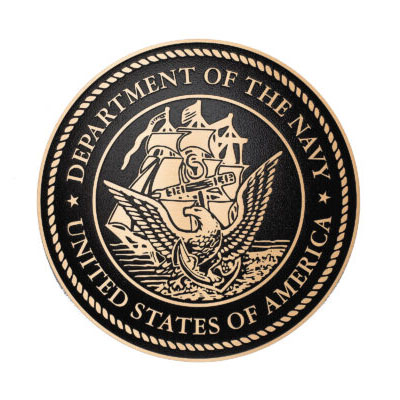
PLAQUES & PLATES
Plaque signage solutions focus on creating elegant, durable signs often used for identification, commemoration, or wayfinding. Key elements include:
- Material Options: Plaques are typically made from materials like bronze, brass, stainless steel, acrylic, or glass, chosen for durability and a professional appearance.
- Customization: Options for engraving, raised lettering, and color infill allow for detailed designs and personalized messages, suited for branding or honoring individuals.
- Mounting Styles: Plaques can be mounted flush to surfaces or with standoffs for a 3D effect, allowing flexible installation on walls, doors, or freestanding structures.
- Finishes & Coatings: Protective finishes, like clear coats or powder coatings, are applied to resist weather, UV light, and corrosion, ideal for both indoor and outdoor use.
- Types & Uses: Common for building identification, memorials, donor recognition, and awards, plaques offer a timeless, high-quality signage solution.
Plaque signage solutions provide a sophisticated, long-lasting option that combines aesthetic appeal with functionality, making them popular for both commercial and commemorative purposes
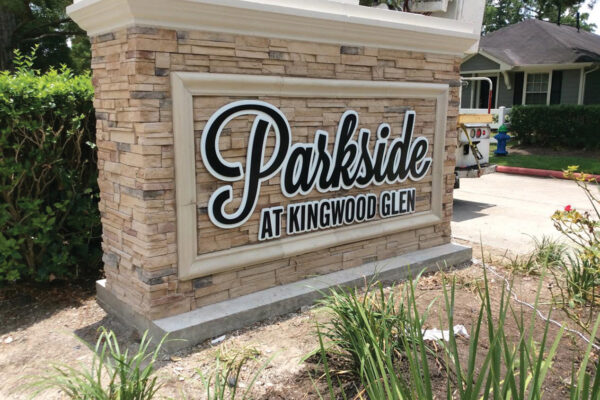
CAST & FLAT CUT METAL LETTERING
Creating signs with cast and flat-cut metal lettering involves using metal letters, often crafted from materials like aluminum, brass, bronze, or stainless steel, to achieve a durable and professional look. Here's a quick breakdown:
- Cast Metal Letters: Made by pouring molten metal into molds, these letters offer a 3D, sculpted look with options for various finishes (polished, brushed, oxidized) and can include intricate details. Cast letters are durable and ideal for elegant, long-lasting signage in settings like universities, corporate offices, or historical sites.
- Flat-Cut Metal Letters: Precision-cut from solid sheets of metal, these letters have a clean, modern appearance and are often slimmer and less dimensional than cast letters. They are cut using laser or waterjet technology, allowing for fine edges and intricate shapes. Flat-cut letters are suitable for contemporary spaces like storefronts, galleries, and interior wall signage.
Both types provide a high-end, weather-resistant option that maintains visual appeal over time. They can be installed directly onto surfaces or mounted with spacers for a floating effect, enhancing visibility and depth in any signage application.
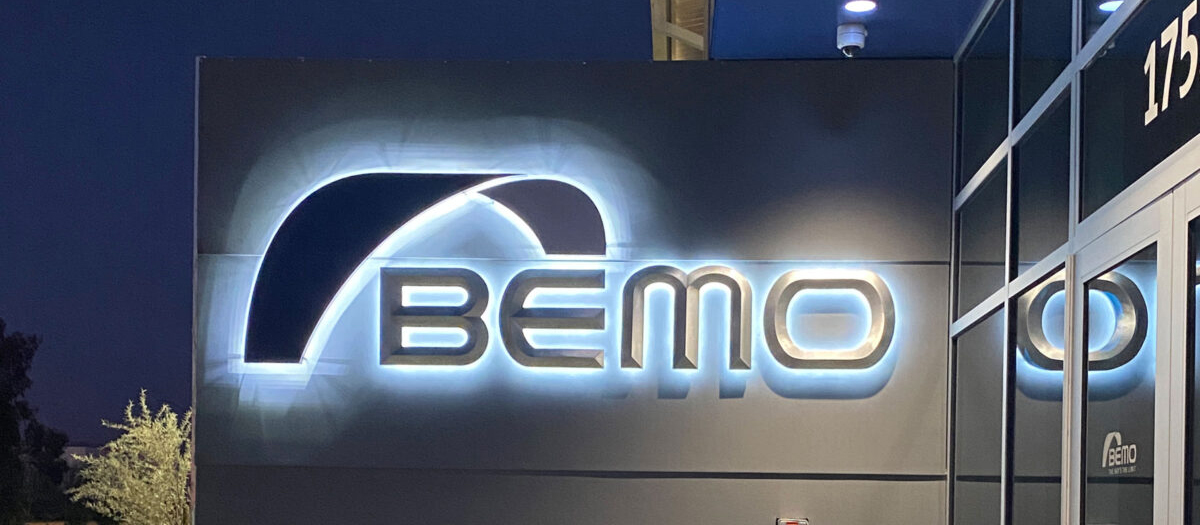
FABRICATED LIT & UNLIT
Creating lit and unlit signs involves different design approaches to ensure visibility and impact based on lighting.
LIT SIGNS:
- Backlit & Frontlit Signs: These use internal or external lights (like LEDs or neon) to illuminate the sign, enhancing visibility at night or in low-light environments.
- Channel Letters & Light Boxes: Common for storefronts and businesses, where letters or logos are individually illuminated for a striking 3D effect.
- Digital Signs: Incorporate animated graphics or changing messages on LED or LCD screens, ideal for dynamic advertising and information sharing.
UNLIT SIGNS:
- Dimensional Letters & Panels: Use materials like metal, wood, or acrylic with high-contrast colors for readability in natural light.
- Printed Banners & Boards: Cost-effective, typically flat, and work well outdoors during the day, though less visible at night.
- Reflective Signs: Made with reflective materials that capture ambient light, making them partially visible at night without direct lighting.
Lit signs are best for round-the-clock visibility, while unlit signs are suited for well-lit areas or daytime use. Both require careful material and color selection to maximize readability and durability.
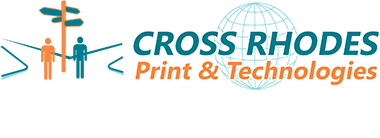
INSTALLATION
Sign installation services involve professionally mounting and securing signs in optimal locations to maximize visibility, durability, and safety. Key aspects include:
- Site Survey & Assessment: Evaluating the location to determine the best positioning, mounting methods, and potential challenges (e.g., electrical access for lit signs).
- Permitting & Compliance: Handling local permits and ensuring that installations meet zoning, safety, and building regulations.
- Mounting & Installation: Using appropriate tools and techniques to securely mount signs on various surfaces, including walls, poles, or freestanding structures.
- Electrical Connections: For lit signs, installing necessary wiring and connections to ensure reliable lighting, following electrical safety standards.
- Maintenance & Repairs: Offering ongoing maintenance or repair services to ensure the sign remains in good condition, including cleaning, light replacement, or touch-ups.
Sign installation services ensure that signs are professionally placed, securely mounted, and compliant with all legal and safety requirements, enhancing longevity and visual impact.
Cross Rhodes Professional Wayfinding Substrates

Enhanced User Experience
Effective wayfinding solutions, such as digital directories, signage, and mobile navigation apps, make it easy for users to find their way. This is especially important in places like hospitals, airports, and malls, where clear guidance can reduce stress and improve visitor satisfaction.

Improved Accessibility and Inclusivity
Good wayfinding design accommodates all users, including those with disabilities, language barriers, or other specific needs. Accessible solutions, like braille signage, audio guides, and multilingual displays, ensure that everyone can navigate the space confidently and independently.

Operational
Efficiency
Wayfinding solutions not only benefit visitors but also improve operational efficiency. By reducing the need for staff to provide directions, organizations can reallocate resources to other areas.

Data Insights and Optimization
Digital wayfinding tools, such as mobile apps or interactive kiosks, often collect data on user movement patterns. This information can provide valuable insights into how spaces are used, helping organizations optimize layouts, signage placement, and even staffing.
Want more info?
Talk to one of our experts today
